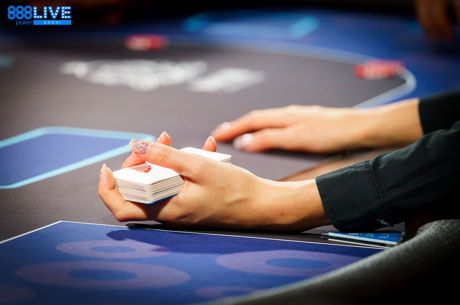Strategy Vault: Basic Mixed-Game Tournament Considerations

Digging deep into the PokerNews strategy archives can lead to a buried treasure, so we'll be unearthing a few gems for your viewing pleasure. For this edition of the Strategy Vault series, we found a piece discussing some basic mixed-game tournament considerations.
Despite the majority of events around the world played with a no-limit hold'em format, mixed games are becoming more and more prominent, especially at the World Series of Poker. Non-hold'em events and mixed-game events have seen large field increases at the WSOP in recent years. The knowledge base in many of these games remains woefully underdeveloped because so many players focus on hold'em. The field sizes of the non-hold'em WSOP events are correspondingly far smaller than their hold'em counterparts, but these "oddball" tournaments, and especially the mixed-game tournaments that combine several of these "oddball" games, provide some of the best opportunities to win a WSOP gold bracelet.
Of course, it's not as easy as just registering for a mixed-game WSOP event, transferring your hold'em tournament knowledge base to the mixed-game tournament and winning a bracelet. In many of the mixed-game events, hold'em is just one game among many, including flop, stud and draw games. As a result, several basic strategy concepts differ.
First, you need to understand which games and in what order will be played. The games rotate in order of the mixed-game's acronym, and in a tournament the game changes at the beginning of each level or after a specific amount of hands. Always pay attention when the game switches. It is very easy to miss the switch and to play a hand of seven-card stud as if you're playing razz, resulting in a very costly mistake.
During a tournament in which only a single game is played, players have to consider their stack sizes simply as a function of the limits in play. For example, if a player is midway through a no-limit hold'em tournament with a stack of 15,000, and blinds are 500/1,000, but about to go up to 1,000/2,000, that player should know that he is about to become dangerously short. A good player will make appropriate adjustments to his opening range based on those facts.
However, in a mixed-game tournament, not only does a player have to take into account the limit changes, but the game changes are also something of high importance to consider. If the game is going to change from one of that player's weaker games to one of his stronger games, he might choose to tighten up considerably until things change with the hope of exploiting his edge in the next game. Conversely, if the game is changing from one of the player's best games to one in which he feels over-matched by the opponents at his table, he may choose to open up his game even more than he normally would in the hopes of chipping up now while he feels confident about his skill level in the game being played.
It should be clear that the only way such a decision can even be made is if the mixed-game player knows which of the games in the mix are his strongest and which are his weakest. That knowledge should inform his play during the course of mixed-game play, but also provides an easy road map for self-improvement. I consider razz to be one of my strongest games, behind only limit hold'em. Therefore, I believe I have an edge over most of my opponents when playing razz, as most poker players dislike razz immensely and try to avoid playing it. I also know that seven-card stud and seven-card stud hi/lo are two of my weakest games.
Ideally, through practice and experience, you will feel equally comfortable with all of the games being played. If that's the case, another factor you might consider is to develop a read of each of your opponent's strengths and weaknesses when it comes to the various games in the mix. In a single-game tournament like a no-limit hold'em tournament, you will know fairly quickly which of your opponents are strong players and which are weak because you can watch them play hand after hand of the same game. In a mixed-game tournament, that knowledge takes longer to develop. After several levels of play, you will only have played a few hands of each different game. In fact, you may not even have played one or more of the games yet. It therefore becomes critically important to pay close attention to every detail of every hand, with the goal of refining your read of how that opponent plays that particular game.
Remember, just because a player plays one game well does not mean he will play all games at a similar level. A player who is a great Omaha player might be a terrible stud player. Someone who plays deuce-to-seven triple draw well may be an utter neophyte when it comes to badugi. An opponent who dazzles you with his hold'em prowess may not know the first thing about razz. Once you know which games are an opponent's strength and which are an opponent's weakness, you can use that information to your advantage to punish that player and pick up extra chips.
For players who are only used to playing one game at a time, playing a mixed game where several games are included can seem incredibly daunting. The easiest, quickest and cheapest way to gain some exposure to the intricacies of mixed games is by playing in a low buy-in multi-table tournament on sites such as PokerStars or Full Tilt Poker.
This article was originally published on Aug. 23, 2008.
To stay on top of the poker world, follow us on Twitter and like us on Facebook.








